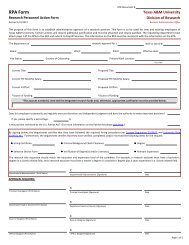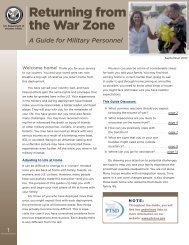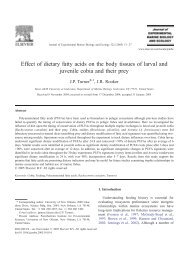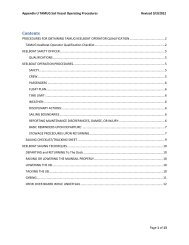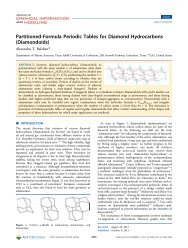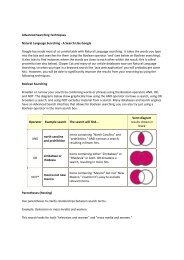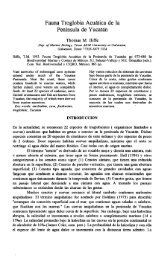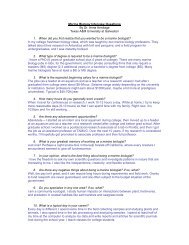Guidelines for Writing a Scientific Paper
Guidelines for Writing a Scientific Paper
Guidelines for Writing a Scientific Paper
You also want an ePaper? Increase the reach of your titles
YUMPU automatically turns print PDFs into web optimized ePapers that Google loves.
Introduction<br />
The purpose of the introduction is to introduce the reader to your experiment. This is<br />
done by giving some background on the subject in general and explaining why your<br />
particular experiment was per<strong>for</strong>med (what will examining the questions that you<br />
examined add to our body of knowledge on the subject?).<br />
<br />
<br />
<br />
<br />
Start broad by introducing background on the general question/problem at hand<br />
and end narrow with the objectives (purpose) and hypotheses of your particular<br />
study.<br />
Write in paragraph <strong>for</strong>m. This section should have multiple paragraphs.<br />
Background in<strong>for</strong>mation should include references.<br />
State purpose of experiment and hypotheses clearly<br />
Materials and Methods<br />
This section describes to your reader exactly what you did and how you did it. The key<br />
to writing this section is to include enough detail in your description to allow another<br />
scientist to reproduce the experiment simply by reading this section of your paper.<br />
<br />
<br />
<br />
<br />
Written in paragraph <strong>for</strong>m<br />
Do not include a list of materials required – the reader should be able to figure out<br />
what is needed based on the description of the method.<br />
Write in past tense<br />
Include appropriate reference if required<br />
Results<br />
This section summarizes the results of your study in written <strong>for</strong>m. It should contain only<br />
results. All interpretations and explanations of the results belong in the Discussion and all<br />
methods belong in Materials and Methods. Often tables and figures are useful in<br />
presenting results.<br />
<br />
<br />
<br />
<br />
<br />
Keep it simple and concise – especially if tables and figures are used, this section<br />
should not be very long.<br />
There must be some written description of results. Simply referring to tables and<br />
figures is not sufficient.<br />
If any tables or figures are used, they must be referred to AND briefly explained<br />
in the text.<br />
Appropriate way to reference a table or figure: “The temperature of the water<br />
was found to increase with time as demonstrated in Figure 1.” OR “Table 2 lists<br />
absorbance values of the chlorophyll solutions and shows that the most<br />
concentrated chlorophyll solutions had the highest absorbance values.”<br />
Inappropriate way to reference a table or figure: “Results are in tables 1,2 and<br />
figure 1.”




